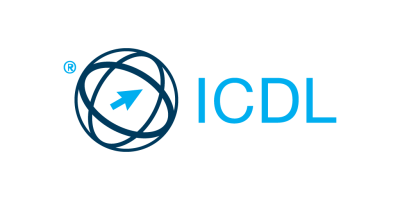GMAT Course
introduction to GMAT Course In this course, you learn the certified GMAT standard ® terminology required to pass the GMAC ® exam. You will receive a CD of material including the GMAT ® Book Guide and exam bank questions. You also receive the …
introduction to GMAT Course
In this course, you learn the certified GMAT standard ® terminology required to pass the GMAC ® exam. You will receive a CD of material including the GMAT ® Book Guide and exam bank questions. You also receive the Campus Education GMAT® attendance Certificate .
[tabs type=”vertical”]
[tab title=”What is The Certificate “]
– The customized Success Prep GMAT Prep class is unique for a number of reasons, below are some of the reasons why our program has been successful in increasing GMAT test scores over 100 points.
– We start with the BASICS , Most applicants to a graduate program have been out of an academic environment for a long time, which makes them weak in some of the core topics being tested on the GMAT.
– At the Success Prep GMAT prep class “we assume you know nothing”, this way we are able to help our students achieve success by starting from scratch, unlike other prep programs which gloss over the fundamental core concepts.
[/tab]
[tab title=”Accredited Organization”]
In 1953, the organization now called the Graduate Management Admission Council (GMAC) began as an association of nine business schools, whose goal was to develop a standardized test to help business schools select qualified applicants. In the first year it was offered, the assessment (now known as the Graduate Management Admission Test), was taken just over 2,000 times; in recent years, it has been taken more than 250,000 times annually. Initially used in admissions by 54 schools, the test is now used by more than 1,500 schools and 5,400 programs worldwide.
[/tab]
[tab title=”Certificate Advantages”]
– The GMAT is a standardized computer test to select prospective students. International universities and business schools, as well as an increasing number of Dutch universities, use the GMAT as an initial screening device for MBA and (pre-) master programs.
– The GMAT consists of four parts.
[/tab] [tab title=”Program Summary”]
Math:
Math| Arithmetic Concepts: Ratio & Proportions, Averages, Polynomials.
Math | Algebra: Equations, Word Problems, Lines & Angles, and Triangles.
Math | Geometry & Data Analysis: Quadrilaterals & Polygons, Triangles Solid Geometry, Coordinate Geometry, Data Interpretation + Data sufficiency.
Data Sufficiency & Practice Test (IN CLASS).
English:
Essay: Analysis of an Issue & Analysis of an Argument.
Reading Comprehension.
Critical Reasoning.
Practice Tests & Review.
[/tab] [tab title=”Target Audience”]
GMAT class is ideal for anyone looking to pursue a Master of Business Administration (MBA) or other business-related advanced degree within the next five years. This course is also ideal for anyone who has been out of school for a few years and for current undergraduate students looking for assistance with the complex quantitative and verbal skills needed to succeed on the GMAT.In addition to MBA programs, those pursuing master’s and doctoral degrees in business, economics, accounting, or other related fields of study may be required to sit for the GMAT.
[/tab]
[tab title=”Program Objectives”]
– This course is intended for students who plan to major in an area of Business, such as Finance, Marketing or Information Systems.
– Those students who plan to transfer to a University abroad will also benefit because similar a course material is a prerequisite for advanced management and mathematics courses.
– In addition, it will prepare the student for the mathematics/quantitative sections of various aptitude tests like SAT, GRE, GMAT, etc.
– In this course Mathematical concepts and problem solving skills will be emphasized.
– The student will be required to develop the ability to manipulate number and algebraic equations, including simple proofs.
– The student will learn to transform word problems into mathematical notation to solve the mathematical problem analytically, and then to express the solution in an understandable form.
– This “mathematical model-building” approach will develop analytical and abstract reasoning ability.
[/tab] [tab title=”Why Campus”]
– Following up/guiding the participant.
– 30 Training credit hours.
– Certified and Professional Instructors.
– Free Material + Questions.
– Free Revision for each section.
– Free Quiz after each section.
– Re-attending the Course when needed without any charge.
– Catering Services.
– Certificate of attendance from CAMPUS.
[/tab] [tab title=”GMAT course structure”]
*The GMAT is a standardized computer test to select prospective students. International universities and business schools, as well as an increasing number of Dutch universities, use the GMAT as an initial screening device for MBA and (pre-) master programs. The GMAT consists of four parts:
1. Analytical Writing Assessment | 30 minutes | score: 0-6
– You start off by writing a short essay about a specific topic given to you. This section tests your ability to clearly express your lines of thought. We advise you to structure your essay in five paragraphs: start with a short intro, then make three points or arguments, and close your essay with a conclusion.
2. Integrated Reasoning Section | 12 questions | 30 minutes | score: 1-8
– This is a new section in the GMAT as of June 2012. You need to answer 12 multiple choice questions about information presented to you in tables and graphs. This section tests your ability to interpret data in a business environment, which is an important skill for a manager and a business student.
– However, since this section was only very recently introduced, we expect schools not to pay particular attention to it. We will spend some time on it in our course, but the Quantitative Section is much more important.
3. Quantitative Section | 37 questions | 75 minutes | score: 0-60
– This section tests your applied knowledge about mathematics as well as your ability to tackle abstract quantitative problems. Together with the Verbal Section, it will determine your total GMAT score.
– You need to answer 37 multiple choice questions in the so-called Problem Solving and Data Sufficiency format. Since you have only 2 minutes per question, it is important that you know exactly which mathematical method or solving short-cut you will use for question type, so you don’t “waste time”.
4. Verbal Section | 41 questions | 75 minutes | score: 0-60
– This section tests your ability to extract meaning from texts as well as to recognize relations between words and parts of sentences. You need to answer 41 multiple choice in three different formats: Reading Comprehension, Critical Reasoning and Sentence Correction.
– Our experience is that people having done English at the HAVO/VWO level (or equivalent) should be able to acquire a decent score by practicing lots of past GMAT Verbal questions. Studying the theory is not as useful as it is for the Quent Section.
Percentile scores: 0-100%
– Your scores on the four sections will also be expressed in percentile scores.
– Your percentile score is the percentage of test takers that score lower than you. For example, a percentile score of 80% on the Quantitative Section means that you belong to the top 20% of all test takers worldwide on that section.
Total GMAT score: 200-800
– Your performance on the Quantitative and Verbal Sections are combined into a total GMAT score on a scale between 200-800.
– Therefore, you should spend most of your studying time preparing for those two sections and not spend too much time on the other sections. Most Dutch universities use 600 as the cut-off value, which in our experience is a challenging score for people not dealing with math on a regular basis. Top schools in the US require a score above 700 for your application to be considered.
[/tab]
[tab title=”Outlines”]
– Introduction + Verbal.
– GMAT Overview.
– Computer Adaptive Testing.
– Introduction to Sentence Correction – Key Skills, Some GMAT Errors.
– Verbal: Homework Review; Sentence Correction – More GMAT Errors, SC.
– Verbal: Homework Review; Sentence Correction Review And Practice.
– Introduction to Reading Comprehension – Key Skills.
– Verbal: Homework Review; Reading Comprehension – Question Types.
– Indefensible and Unlikely Answers.
– Writing: Argument Essay, GMAT Arguments.
– Math: GMAT Quantitative Section Overview.
– Computer Adaptive Testing and strategies.
– Problem Solving and Data Sufficiency Problems.
– Introduction to the Number Theory.
– Writing: Argument Essay, Follow-Up and Review.
– Math: Geometry and Coordinate Geometry Overview and Practice.
– Math: Exponents, Roots, Ratios, Percents, Word Problems Part 1 (Work Problems).
– Verbal: Homework Review, Reading and SC Review, Reading Comprehension.
– Practice, Introduction to Critical Reasoning – Components of Key Skills.
– Verbal: Homework Review; Critical Reasoning – Flow of Information, Question.
– Families and Types.
– Verbal: Homework Review; Critical Reasoning Practice.
– Verbal: Homework Review; Review, Final Verbal Test.
– Writing: Issue Essay, GMAT Issues.
– Math: Word Problems Part 2 (Mixture, Coin, Age and Interest Problems), Data Sufficiency Practice Test.
– Writing: Issue Essay, Follow-Up and Review.
– Math: Combination and Counting (Permutations, Variations, Combinations, Inclusion-Exclusion Principle), Probability, Statistics (Mean, Median, Mode, Range, Standard Deviation).
– Math: Review, Final Test; Final Test Explanation.
[/tab][tab title=”Fees/Tuition”]
For the latest offers & Savings Please Call now .
[/tab] [tab title=”Duration/Schedule”]
30 Credit Hours:
– One Lecture per week ( 1.5 Months ).
– Two Lectures per week ( 1 Months ).
[/tab]
[tab title=”Instructors/Lecturer”]
Each of our instructors is English languages experts (English Native / Arabic Natives) with at least 15 years of experience.
Speaking Languages:
( English / Arabic ).
[/tab]
[tab title=”Exam Details”]
To register for a course, all new students will take a placement test which consists of both a written and a spoken section for Free.
[/tab]
[/tabs]
Course Features
- Duration 50 hours
- Activities Others




















